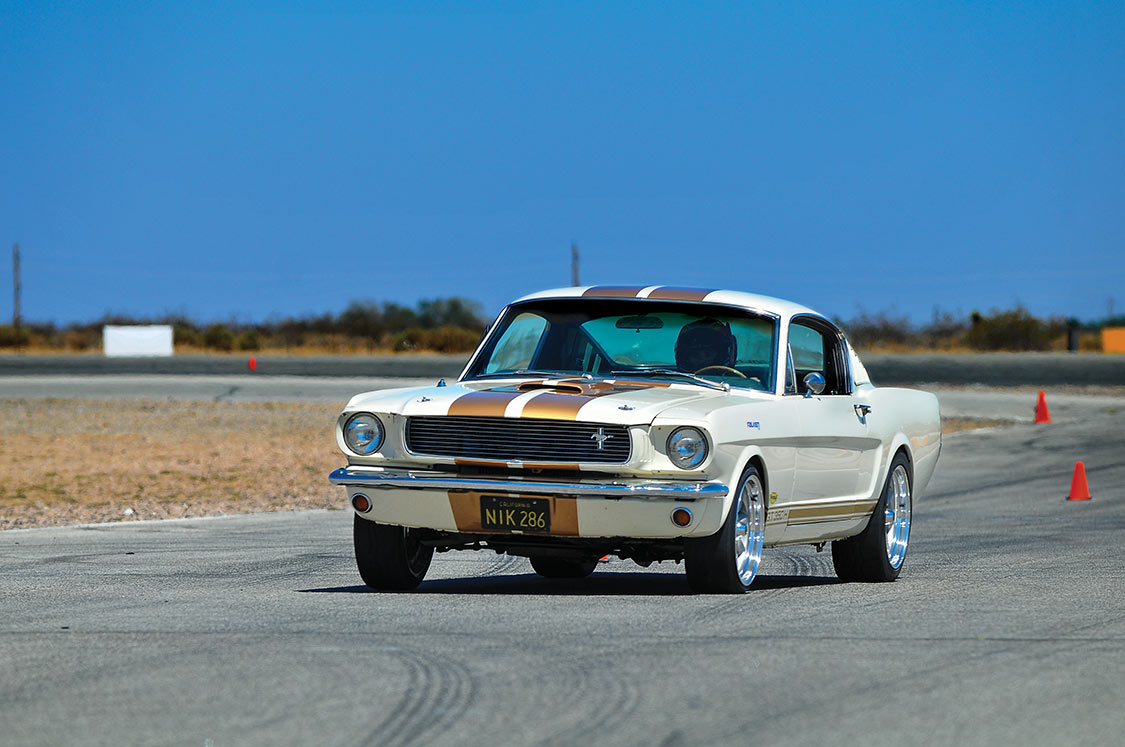JOHN HOTCHKIS JR. October 25, 2022 All Feature Vehicles

The factory crate-motor phenomenon has swept our industry at warp speed. With mega horsepower being just a phone call or website order away, many enthu- siasts simply buy the big power and neglect upgrading their stock suspension to handle the increase. I see this quite often at car shows where, upon talking to the owner, I learn their beloved project is plenty fast, but not enjoyable to drive. Suspension design, engineering and technology have come a long way in the last 40-plus years and now, just about any rental car—even a minivan!—will drive circles around a vintage muscle car with stock suspension.
An easy fix is more rubber on the pavement, right? Actually, no. It may seem counterintuitive, but handling issues are exaggerated when new high-performance tires and larger wheels are installed. The reason why is that stock muscle-car suspensions were not designed for today’s stiff-sidewall radial tires, or to cope with the increased cornering loads they create. These increased loads will cause the factory rubber bushings and control arms to flex, altering wheel alignment and degrading steering accuracy. The additional grip can also overload the power steering pump, causing a white-knuckle driving experience during sudden or extreme maneuvers. Radial tires need entirely different suspension geometry with ample negative camber and positive caster to work correctly.


Once these basic components are renewed, the next step is to add a matched front and rear sport sway bar and performance shock package. These upgrades will give you immediately noticeable improvements in handling, control and ride comfort. Next I recommend a performance spring package featuring shorter springs with a higher spring rate. These lower the car for increased control and a modern, aggressive look.
By this point your muscle car will be handling much better, but the issue of the factory suspension geometry still hasn’t been addressed. That is why I would follow the spring, shock and sway-bar upgrades with geometry-corrected front upper and lower A-arms, a bump-steer control kit (where applicable) and a performance rear-suspension package with adjustable upper trailing arms. These modifications will add the needed positive front caster, the ability to adjust static camber settings and optimize your driveshaft pinion angle, all of which enhance grip and control.
“If doing so isn’t possible for budgetary reasons, then a good start is replacing worn steering components including the ball joints, idler arm, center link, tie rods and related parts.”

Finally, adding chassis bracing will stiffen and support the shock towers, front subframe, suspension pickup points and unibody struc- ture, allowing the body and chassis combination to adequately deal with the increased cornering loads your car is now able to generate.
For those drivers looking to unlock every last bit of handling po- tential, adjustability is the key. Adjustable sway bars allow tailoring roll stiffness to match the driver’s preference for understeer, oversteer or neutral handling. As well, properly tuned performance shocks dampen spring energy to maintain the tires’ optimum contact patches. While many premium double- and even triple-adjustable shocks allow further fine-tuning of handling and ride quality, single-adjustable shocks allowing only rebound-damping adjustment are highly effective and also affordable solutions.
Throughout my racing career, the car issue most talked about was handling. Rarely would a driver say, “I would have won if the car had more power.” It was always about the handling. Many years later, the same challenge exists with today’s high-powered street machines, where big power without commensurate handling can also create an unsatisfying motoring experience. Fortunately, muscle-car owners can now fix that as easily as they can add horsepower. You just need to know how.

More power and rubber on the ground always sounds good, but these additions can actually amplify the limited handling capabilities of classic muscle cars. Changing to geometry- correcting A-arms, in addition to specially calibrated springs, shocks, sway bars, links and bushings, offers the most comprehensive solution. This all-in-one Hotchkis Extreme Sport TVS Lowering Kit fits 1978–1988 GM G-body cars such as the Chevrolet Malibu.